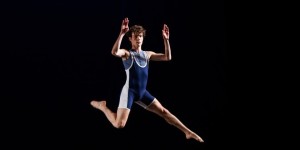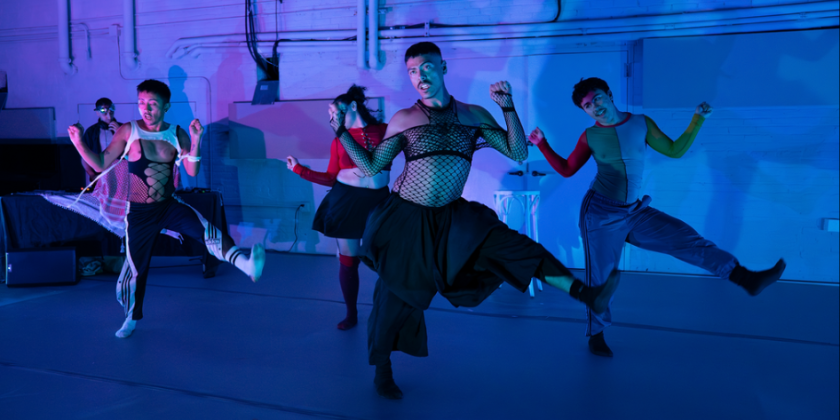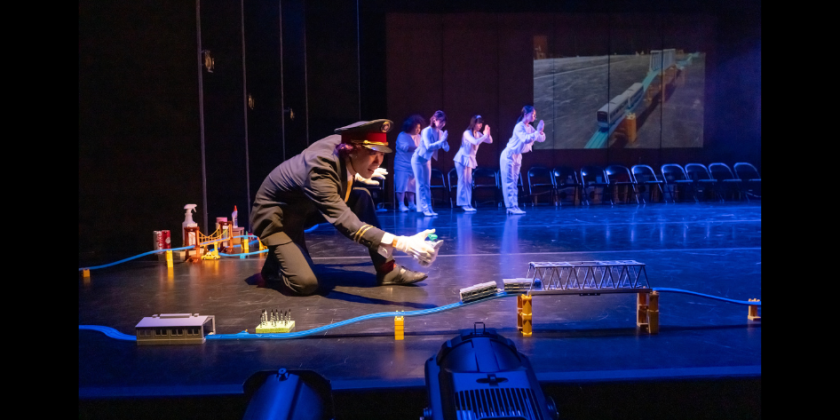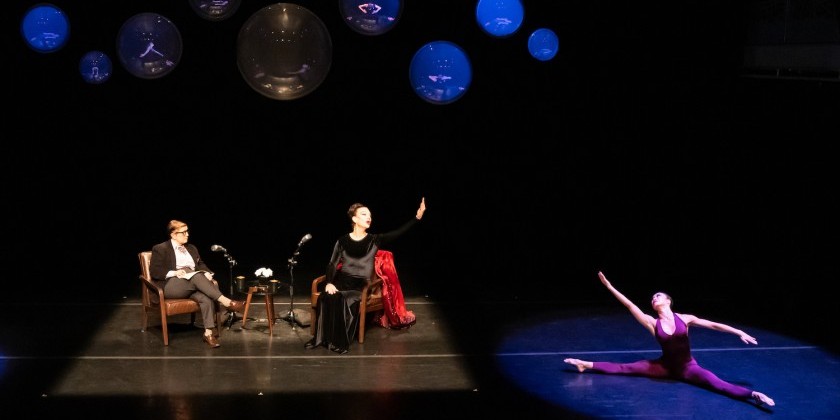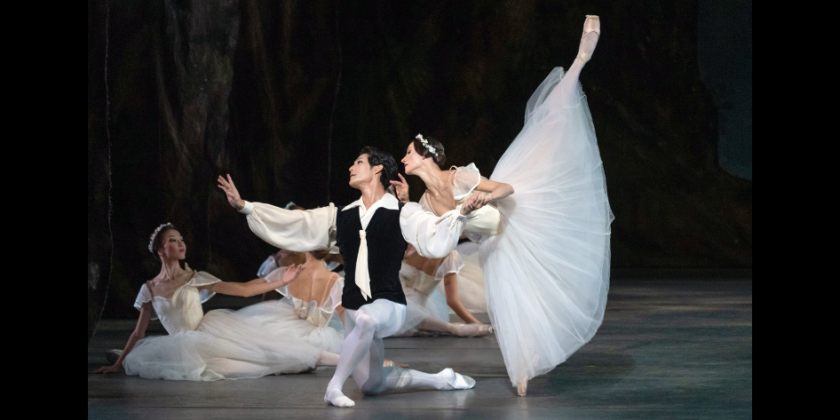IMPRESSIONS: Women/Create! with Armitage Gone! Dance, Buglisi Dance Theatre, Carolyn Dorfman Dance, and Jennifer Muller/The Works
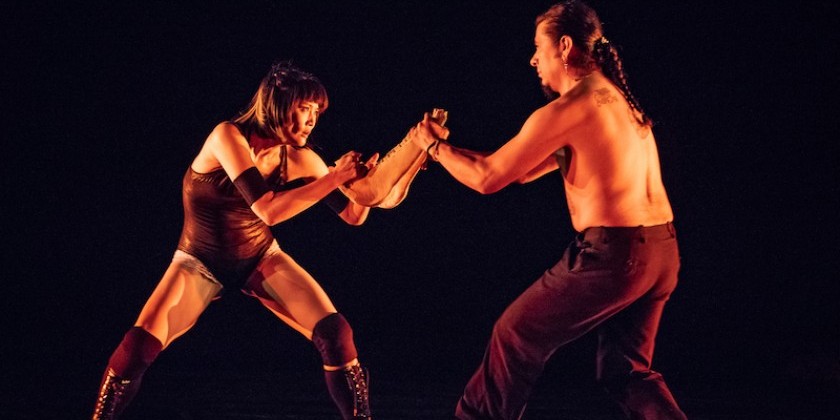
June 12-16, 2018
New York Live Arts
Armitage Gone! Dance / Artistic Director: Karole Armitage
Buglisi Dance Theatre /Artistic Director: Jacqulyn Buglisi
Carolyn Dorfman Dance / Artistic Director: Carolyn Dorfman
Jennifer Muller/The Works / Artistic Director: Jennifer Muller
Pictured above: Armitage! Gone Dance's Megumi Eda with musician Juan Lozero in Karole Armitage's Donkey Jaw Bone; Photo: Stephen Pisano
Choreographer Karole Armitage is no stranger to Mexico. Her 1996 opus Predator’s Ball, inspired by the life of conniving junk-bond trader Michael Milken, featured a memorable scene in which Milken proposed buying that whole country: mariachis, refried beans, and all. A curtain rose to reveal a dazzling fantasy of life south-of-the-border.
Armitage’s latest Mexican concoction, less ambitious in scale and oddly less tongue-in-cheek, given that its subject is free-style wrestling; received a preview performance on Tuesday at New York Live Arts, as part of a series of shared concerts newly dubbed “Women/Create!” Jacqulyn Buglisi, Carolyn Dorfman and Jennifer Muller were the other choreographers featured.
Feel free to ignore the program note, in which Armitage lays claim to the heritage of George Balanchine (Agon). Her new work, Donkey Jaw Bone, does include some balletic imagery, specifically a moment when two women are lifted face-to-face in arabesque, but kicks and strangle-holds are more to the point. Jaw Bone, which pretends to transform sports entertainment into high culture, falls outside the limits of neo-classicism.
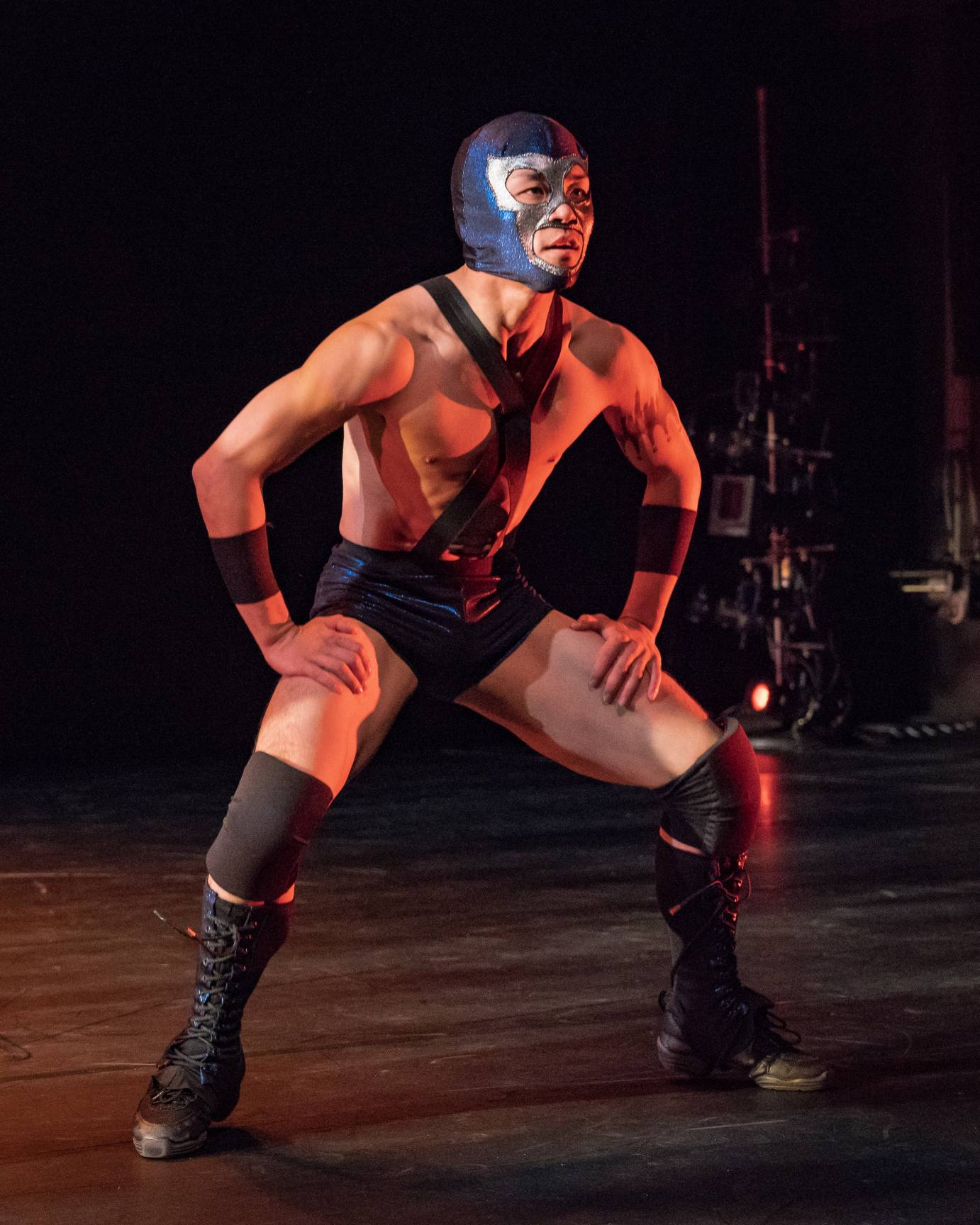
With its cast of “Técnicos” (good guys), “Rudos” (bad guys) and “Exóticos” (effeminate men), the flamboyant spectacle that the Mexicans call “Lucha Libre” is a sociologist’s dream.
Armitage isn’t as good at faking brutality as the stars of Wrestlemania, however, so when two men seize Yusako Komori and hold him in a split that makes him flutter his hands, the pain isn’t convincing. The violence in a women’s match looks more authentic, although the choreographer continues to resort to stiff poses. Armitage sandwiches the whole dance between an episode of ritual combat and a procession. Along the way, the fighters emasculate husky Christian Laverde Koenig, exchanging his mask for a sparkling peignoir and high heels; and seductive Megumi Eda battles a musician for possession of the weapon with which Samson smote the Philistines. (The jaw-bone of an ass is a Mexican folk instrument.)
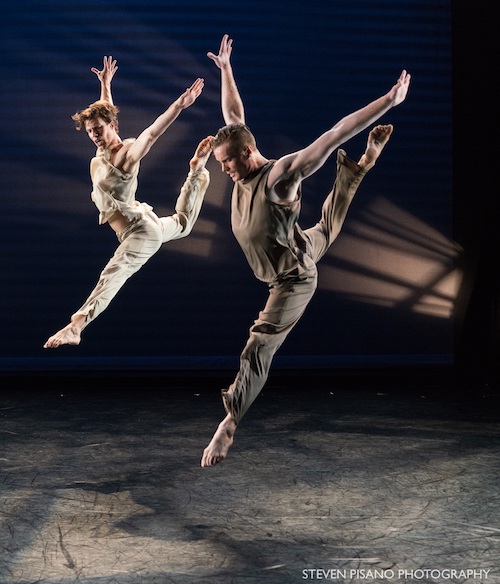
Next up, Muller’s Shock Wave hints at a political theme. At one point in this neatly assembled dance, an explosion rocks the stage (think — “2016 election”). This blast leaves the survivors, a flurry of rapidly melting snowflakes, crawling away in shock. In the next scene, Sonja Chung cradles Shiho Tanaka’s apparently lifeless body, and other women join her in a large-gestured dance of mourning with heads thrown back in lamentation. The over-arching structure of the piece, however, portrays a community in transition. At the outset, this group consists of isolated individuals who shy away from being touched. By the end, disaster has brought them together and forged strong bonds among them. Muller is an optimist.
The dramatic highlight of the evening, Buglisi’s 1991 duet Threshold, pays tribute to the choreographer’s larger-than-life mentor, Martha Graham. Extravagantly conceived, and performed with wonderful subtlety and intensity by Virginie Mécène and Kevin Predmore, Threshold begins with the sight of a woman’s apparently naked body struggling to free itself from a cocoon. Her face presses darkly against the fabric enclosing her, and then retreats. Then her hands rise through an opening clutching something that turns out to be her own entrails.
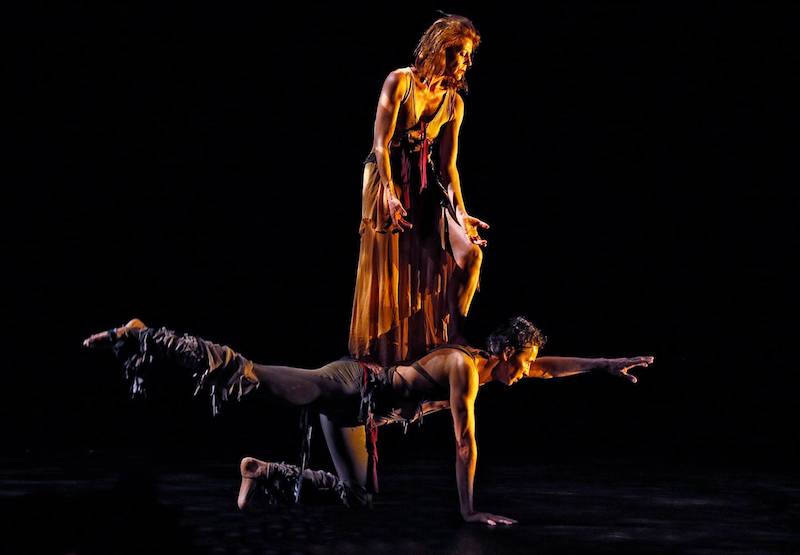
The dance has just begun, and it’s already over-the-top. Then Predmore enters, on the prowl. By now, Mécène has emerged, and is standing downstage, unaware of Predmore’s stealthy approach. He looms over her, seeming about to strike a fatal blow; but instead what follows is an extraordinary journey. Predmore ferries Mécène back and forth across the stage in a variety of acrobatic poses that somehow manage to look natural. At first he carries her back-to-back; but then she climbs aboard his shoulder and dangles upside down with her long hair sweeping. As he creeps forward on all fours, she sits astride him proudly, hugs him close, swings beneath him, and, yes — she even stands on him. Their touch is gentle, yet their bodies maintain an orgasmic tension. At last, the journey ends and the couple subside exhausted. Mécène retires to her cocoon. Predmore seems to rage at her departure; and then slinks off alone.
It’s time for something light and playful, and Dorfman’s WAVES makes a great closer. This charming dance from 2015 begins as a kind of music visualization, with the dancers responding to an eclectic score composed and recorded by Pete List, Jesse Reagan Mann, and Daphna Mor. Katlyn Waldo, the soloist who opens the piece, strikes her hips to the staccato sound of plucked strings, and falls to the ground in response to a sudden “slide” on a cello. Brandon Jones folds his arms with attitude and skitters to the music of the beat boxer. A carefree, young couple matures when they hear the solemn tones of a recorder. The dancers make music with their breath, too; and this amplified breathing becomes a wind powerful enough to knock people down.
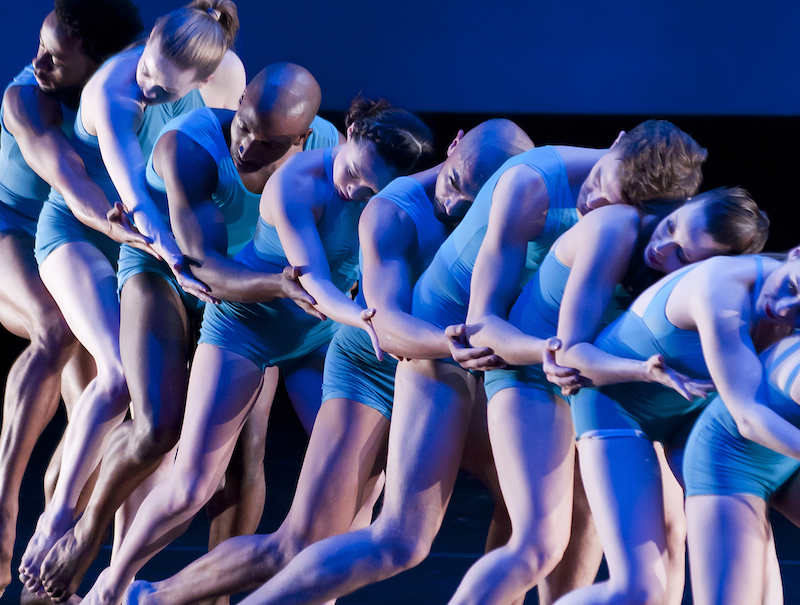
Dorfman’s choreography comes into its own, however, when her group work becomes architectural, forming “waves” of movement on the floor. The dancers line up and, one-by-one, they roll over with an arm curling overhead. After they recover, they fall again like dominoes. They peel away from the line, and tumble. After the group departs, leaving Elise Pacicco alone on stage, she continues to perform the moves all by herself — a lonely little module.
Beware. The audience will be sucked in, too, divided into groups and trained to perform as a movement choir. Dorfman’s “waves” are liable to wash over the lip of the stage; and as the dance concludes the performers stretch their arms out, reaching forward to grab us.





